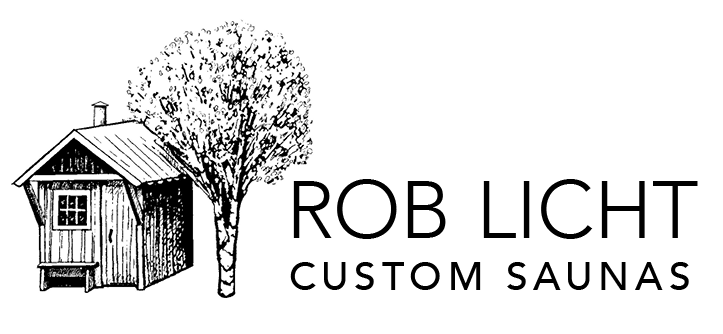
Sauna Ritual
Sauna is an interesting word. It is both a noun that describes the little structures I spend my days making and the action of how one uses that building. Mostly, I focus on the details of building and let the details of how one uses the sauna fall to the individual taste of my clients. I don’t adhere to a dogmatic approach; everyone has experiences and memories to draw from. Different countries have subtle variations: wetter, drier, hotter, timed sessions, birch vihtas, etc. My memories stem from my time at Podunk, in the old Finnish sauna. I remember the five gallon joint-compound buckets used to gather water from the creek and few much-loved, battered aluminum wash basins as well as plastic wash tubs, wooden back brushes, loofa scrubbers, and other unique bathing implements. There was always some sort of ladle for pouring water on the rocks (which we always called a kipper in some misappropriation of Finnish-ness). And there were various soaps and shampoos—some common, some not so, like the dark-brown Finnish pine tar soap, which, despite its comparison to the sticky pine tar we brushed on our skis, actually felt pretty good.

Once the sauna got good and hot, we stripped down as unceremoniously as possible and went in. The first round was always be pretty talkative and end with a healthy ladle-full or two of water on the hot rocks until we had to bolt out the door and head to the creek. If someone were annoyingly loud, sometimes a good löyly would be timed to quiet things down. In the second and third rounds, if someone had bothered to make birch vihta from the tree outside the Podunk sauna, we might take great pleasure in thrashing each other (gently) with the leafy switch. The old Finns would make vihta in the spring out of fresh, soft birch leaves and keep them in the freezer. Now, you can actually buy them from Finland—dried and vacuum packed for a reasonable sum. After softening them in water for twenty minutes, they smell just like a fresh birch tree.
The last round in the sauna was the time to wash: after getting hot again, we took turns on the little washing bench, scrubbing ourselves (or each other) with the loofa or stiff sauna brushes and some sauna soap. Finally, a rinse with warm water washed off all the dead skin and residue of a week’s hard work, and we would leave the sauna all fresh and natural smelling. None of us ever had to wear deodorant or poufy colognes.



Sometimes I sauna with friends, sometimes alone. Always, it is the same: get hot until sweat just pours out of me, cool off, repeat; scrub my skin, maybe switch my back with the vihta, wash up, rinse down the sauna. It’s a ritual of sorts, but not like how a ritual in the church is dictated to you. As in church, there are ritual objects that create focus and help direct the actions, but instead of incense and gold, they are plastic and wood. And unlike church, there is no sin in doing it anyway you want to. The brushes, basins, ladle, soap, and vihta are there to help maintain the flow of the sauna experience. To the uninitiated, it may seem strange, but after a few times in a sauna, it all makes sense. It is just a bathhouse, after all.
Lately, I have found that the top of my noggin does not have so much insulation from the heat of a good löyly so I have taken to wearing a felt sauna hat, which is sort of like a Shriner’s Fez, which is to say that it makes you feel just a little goofy. But, then again, I wouldn’t want to be accused of taking the sauna ritual too seriously!


